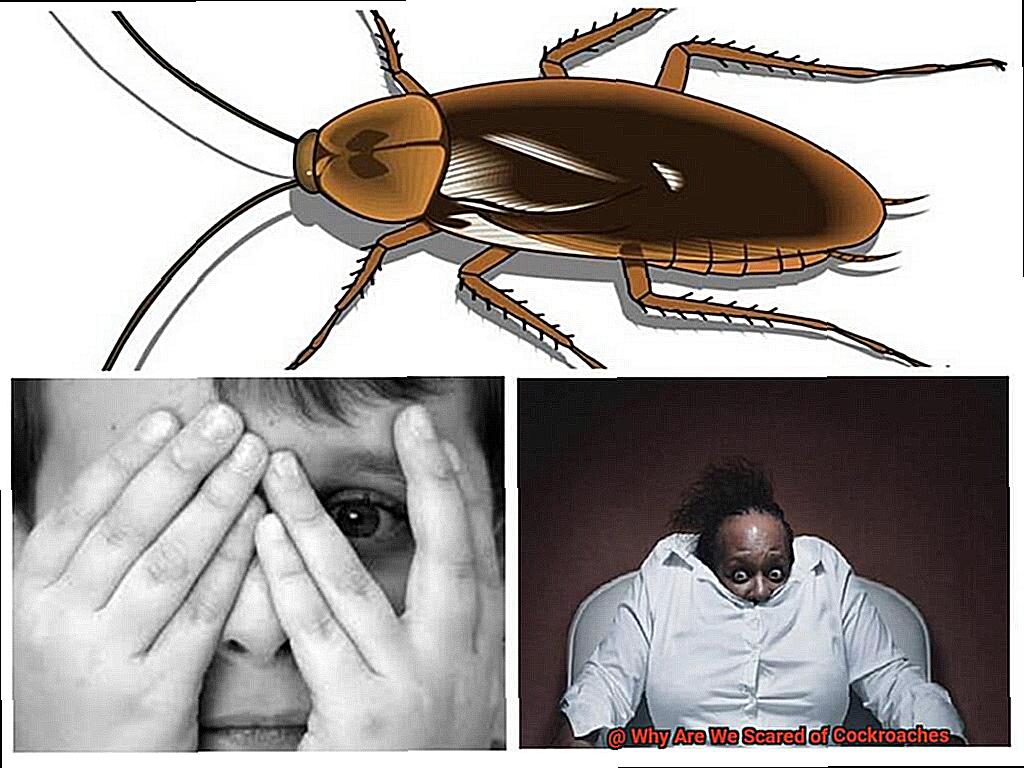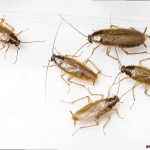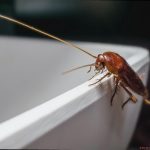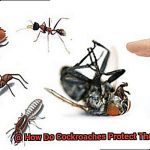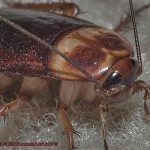Have you ever found yourself paralyzed with fear at the sight of a cockroach?
Do you feel like running away or screaming at the top of your lungs when you see one? If so, rest assured that you’re not alone.
Cockroaches are one of the most common phobias worldwide, and for good reason. These creepy crawlies are often associated with filth and uncleanliness, which can trigger an immediate disgust response in many people.
They are frequently found in dirty, cluttered spaces such as sewers, garbage cans, and drains. This association with unsanitary environments makes them seem like carriers of diseases and germs, adding to their creep factor.
In addition to this, cockroaches move quickly and unpredictably. Their sudden movements can startle even the bravest souls out there.
It’s no wonder that they have become synonymous with terror and panic. But why do we have such an intense fear of these insects?
One theory suggests that it’s due to our evolutionary history. Humans have evolved to instinctively avoid potential threats, including animals that could pose a danger to our survival.
Even if we don’t consciously view cockroaches as a direct threat to our safety, our brains may still perceive them as such on a subconscious level.
So, there you have it – whether it’s their appearance or associations with unsanitary environments or our evolutionary instincts – there are plenty of reasons why we are scared of cockroaches.
The Association with Dirt and Filth
Contents
One of the main reasons is their association with dirt and filth.
These creepy crawlies are often found in unsanitary environments, such as sewers, garbage disposals, and other places where bacteria and germs thrive. As a result, many people associate them with disease and contamination.
It’s not just their appearance that unnerves us, but also the potential health risks they may pose. In many cultures, cleanliness is considered a virtue, and dirt and filth are seen as signs of moral decay.
Cockroaches, with their unsavory appearance and association with dirty environments, may be seen as a symbol of this decay. The mere sight of them can make us feel unclean and ashamed, leading to feelings of anxiety and fear when encountering them.
The fear of cockroaches is further perpetuated by movies and popular media that often depict them as creepy or dangerous creatures. However, it’s important to remember that not all cockroaches are harmful to humans.
While they may be associated with filth and disease, they do not necessarily pose a direct threat to our health. So how can we prevent infestations in our homes?
Regular cleaning and sanitation practices can go a long way in keeping these pests at bay. Sealing off cracks and crevices where they might enter your home, fixing leaky pipes, and storing food properly are all important steps in preventing infestations.
Their Appearance
Cockroaches are universally known as one of the most despised pests in the world, and their appearance is undoubtedly one of the primary reasons why people dread them.
With their flat, oval-shaped bodies, long antennae, and six spiny legs, they have a distinctive look that’s impossible to miss. Their hard exoskeletons cover their bodies and can be brown or black in color, while their wings allow them to fly short distances.
The mere sight of a cockroach scurrying across your kitchen floor or climbing up your bathroom wall is enough to give anyone shivers. Their appearance is creepy and unsettling, and their ability to hide in plain sight makes them even more intimidating.
Thanks to their flat bodies and knack for finding small cracks and crevices, they can quickly slip into hard-to-reach places without detection. In addition to their appearance, cockroaches are infamous for being carriers of diseases and bacteria that pose a significant threat to humans.
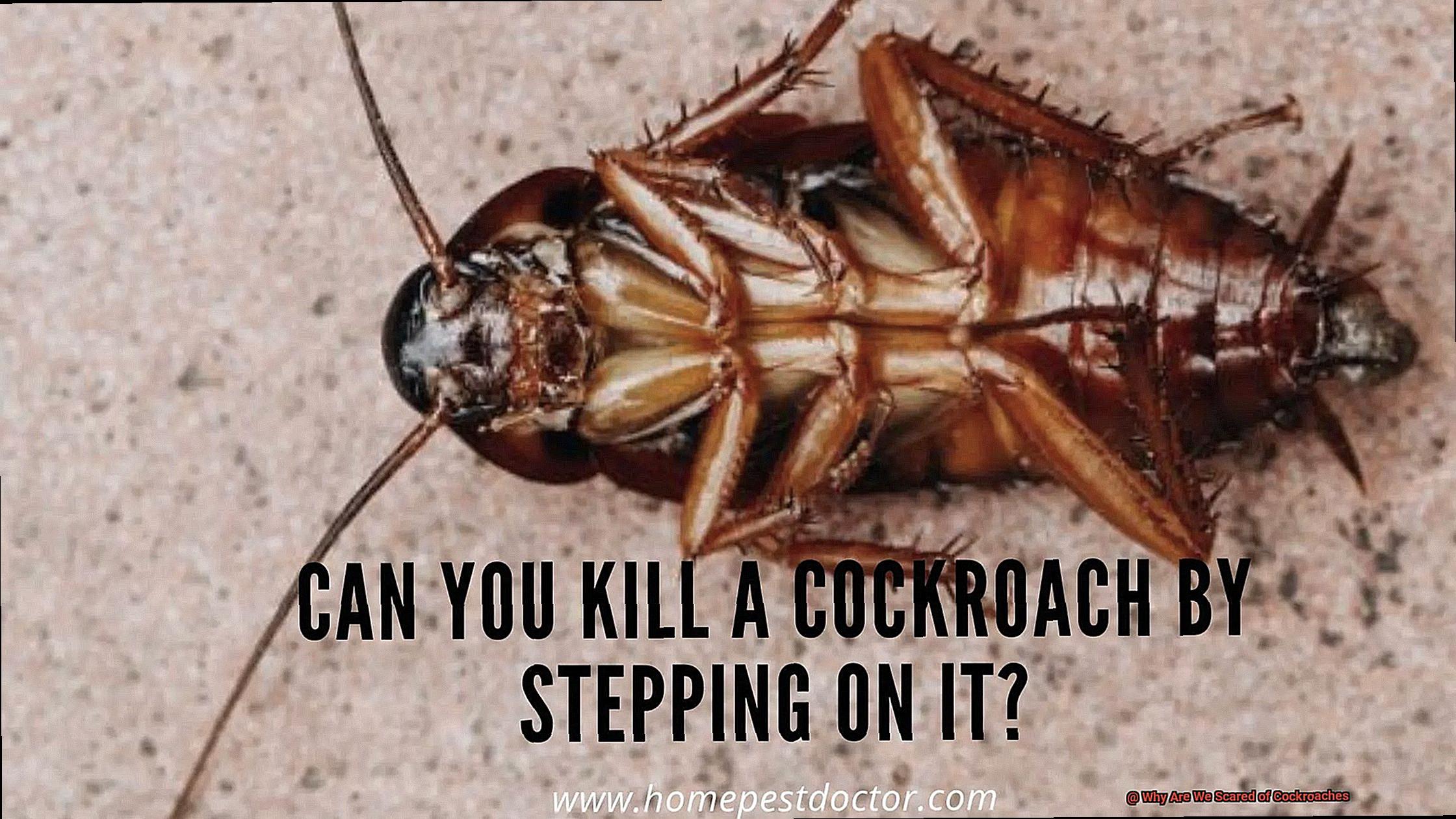
Just seeing these pests in your home can trigger a fear response because they can transmit diseases like Salmonella and E.coli. Their appearance coupled with their potential to cause illnesses can make them seem all the more terrifying.
It’s no wonder that people are scared of these pests. However, it’s important to remember that there are steps you can take to prevent infestations.
Keeping your home clean and well-maintained is essential. By regularly cleaning up food crumbs and spills, sealing up cracks and holes in walls and floors, and keeping garbage in tightly closed containers, you can significantly reduce the risk of a cockroach infestation.
So, the appearance of cockroaches is one of the primary reasons why people are scared of them. Their ability to hide in plain sight coupled with their potential to carry diseases makes them a cause for concern.
Our Instinctive Response to Sudden Movements
These creepy crawlies may be tiny, but they can make even the bravest of us jump in fear.
But why do we react so strongly to them? Our brains are wired to respond quickly to sudden movements, as a way of protecting ourselves from potential danger.
This is known as the startle reflex, which is an automatic response that occurs in response to unexpected stimuli. So when we see a cockroach scurrying across the floor or flying towards us, our startle reflex kicks in, causing us to jump back or scream in fear.
This reaction is not unique to cockroaches but is a response to any sudden movement that we see as a potential threat. The reason for this instinctive response is that sudden movements can trigger our fight or flight response, which is a survival mechanism that prepares us to either defend ourselves or flee from danger.
In the case of cockroaches, our instinctive response may be heightened due to their association with filth and disease. Cockroaches are known carriers of harmful bacteria and can contaminate food and surfaces in our homes.
This association with disease may amplify our fear response and make us more likely to perceive them as a threat. It’s important to understand that this instinctive response is natural and serves a purpose in protecting us from potential harm.
However, it’s also important to manage our fear and take steps to reduce the presence of these pests in our homes. Regularly cleaning up food crumbs and sealing cracks in walls and floors can help prevent cockroach infestations.
In conclusion, our instinctive response to sudden movements plays a significant role in our fear of cockroaches. By understanding this response, we can better manage our fear and take steps to coexist with these pests without living in constant fear.
Cultural Factors
In some Western societies, cockroaches are viewed as a symbol of filth and disease, leading to a sense of disgust and aversion towards them.
However, in other cultures, they are viewed as a delicacy or even a source of medicine. For instance, in China and other parts of Asia, dried cockroaches are used in traditional medicine for various ailments such as stomach ulcers and respiratory infections.
In Thailand, fried cockroaches are considered a popular snack. These cultural differences highlight the importance of understanding how our background can influence our attitudes towards these insects.
Media and popular culture can also contribute to our fear of cockroaches. Horror films often depict them as creepy or monstrous creatures, reinforcing our negative perception of them.
Similarly, news reports about cockroach infestations in restaurants or hotels can heighten our aversion towards them. Despite the cultural factors that shape our perception of cockroaches, it is important to remember that they can pose a health hazard if their presence is not managed.
Therefore, it is crucial to take steps to reduce their presence in our homes for safety reasons.
Common Solutions to Control and Prevent Infestations in the Home
Cockroaches can be a pesky and persistent presence in many homes.
But fear not, there are several common solutions that can help control and prevent infestations of these creepy crawlies. First things first, eliminate their potential food sources.
Cockroaches are attracted to food crumbs, grease, and standing water. So, clean up spills and crumbs immediately, store food in sealed containers, and fix any leaky pipes or faucets to eliminate standing water.
Next up, seal up any potential entry points. These pesky pests can sneak in through even the tiniest cracks and gaps in walls, floors, and windows.
Use caulk or weatherstripping to seal up these gaps and prevent cockroaches from entering your home uninvited. Insecticides can also be effective in controlling cockroaches.
However, it’s essential to follow instructions carefully and use them safely. Keep children and pets away from treated areas, and consider using baits instead of sprays as they are less likely to be harmful if ingested.
A clean and clutter-free home is also key to preventing cockroach infestations. Regularly vacuum carpets and wipe down surfaces to eliminate crumbs and food residue that attract cockroaches.
By implementing these common solutions for controlling and preventing cockroach infestations, homeowners can feel at ease knowing they are taking proactive steps towards eliminating this common household pest.
lkdLg0Nq4SQ” >
Conclusion
To sum it up, the fear of cockroaches is a widespread phobia that stems from various reasons.
The association of these creepy crawlies with unhygienic environments and health hazards, combined with their sudden movements and eerie appearance, triggers our natural instincts to flee potential threats. Furthermore, cultural influences and media portrayals can also contribute to our aversion towards these pests.
However, it’s essential to keep in mind that not all cockroaches pose a threat to humans. We can take preventive measures such as regular cleaning and sanitation practices, sealing off entry points, or using insecticides or baits to control and prevent infestations in our homes.
By understanding the science behind our fear of cockroaches, we can better manage our reactions towards them and coexist peacefully.

